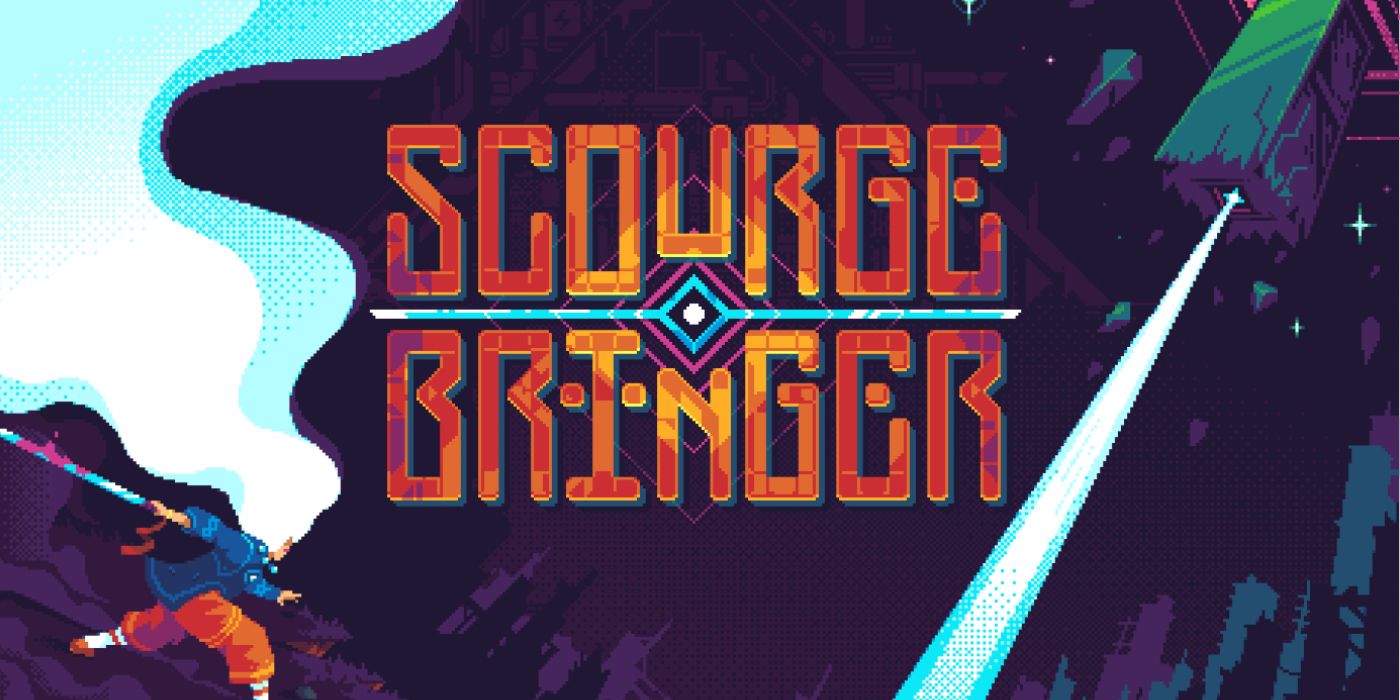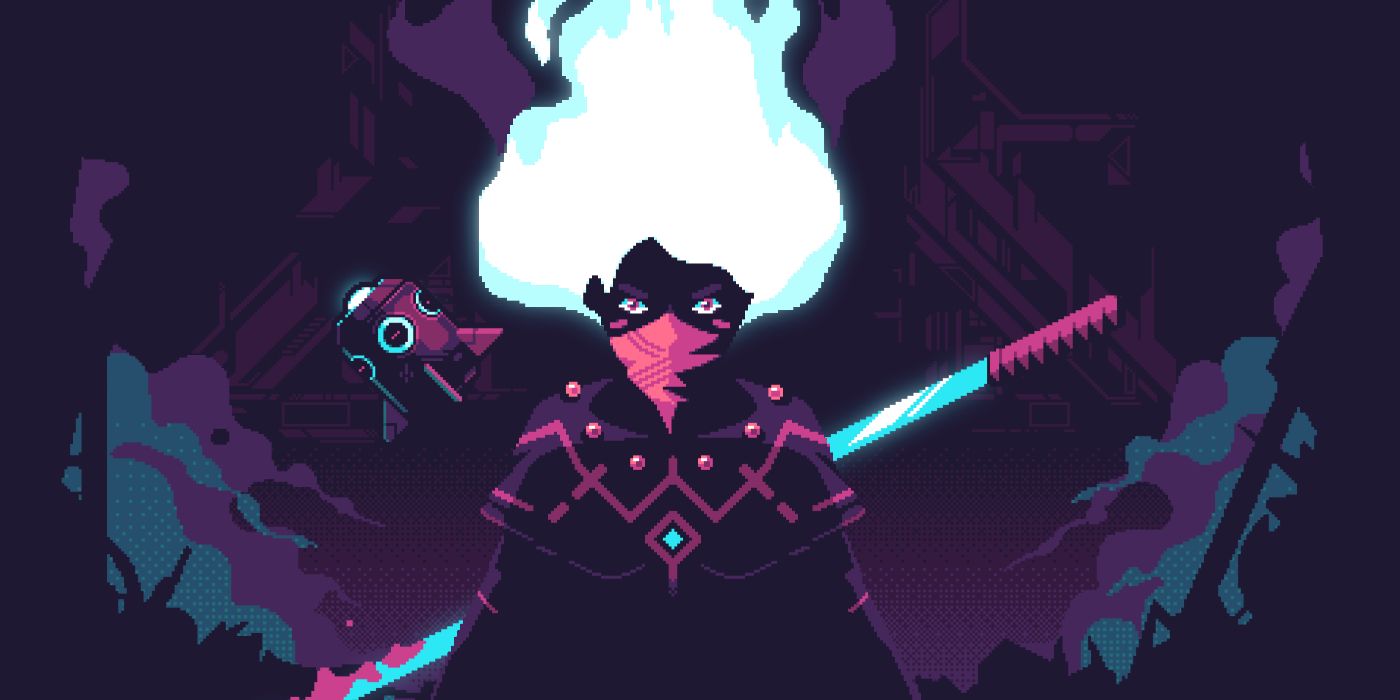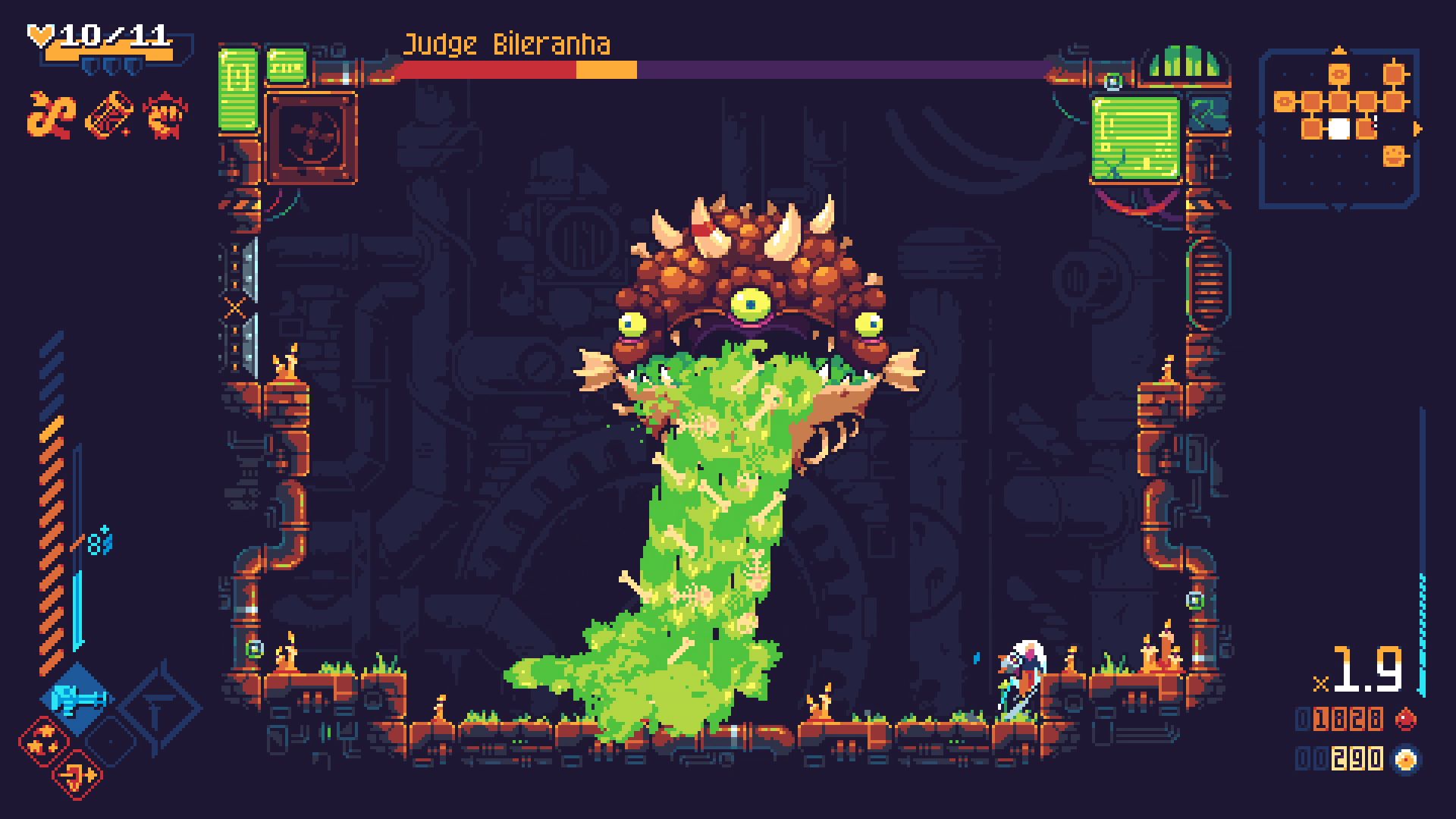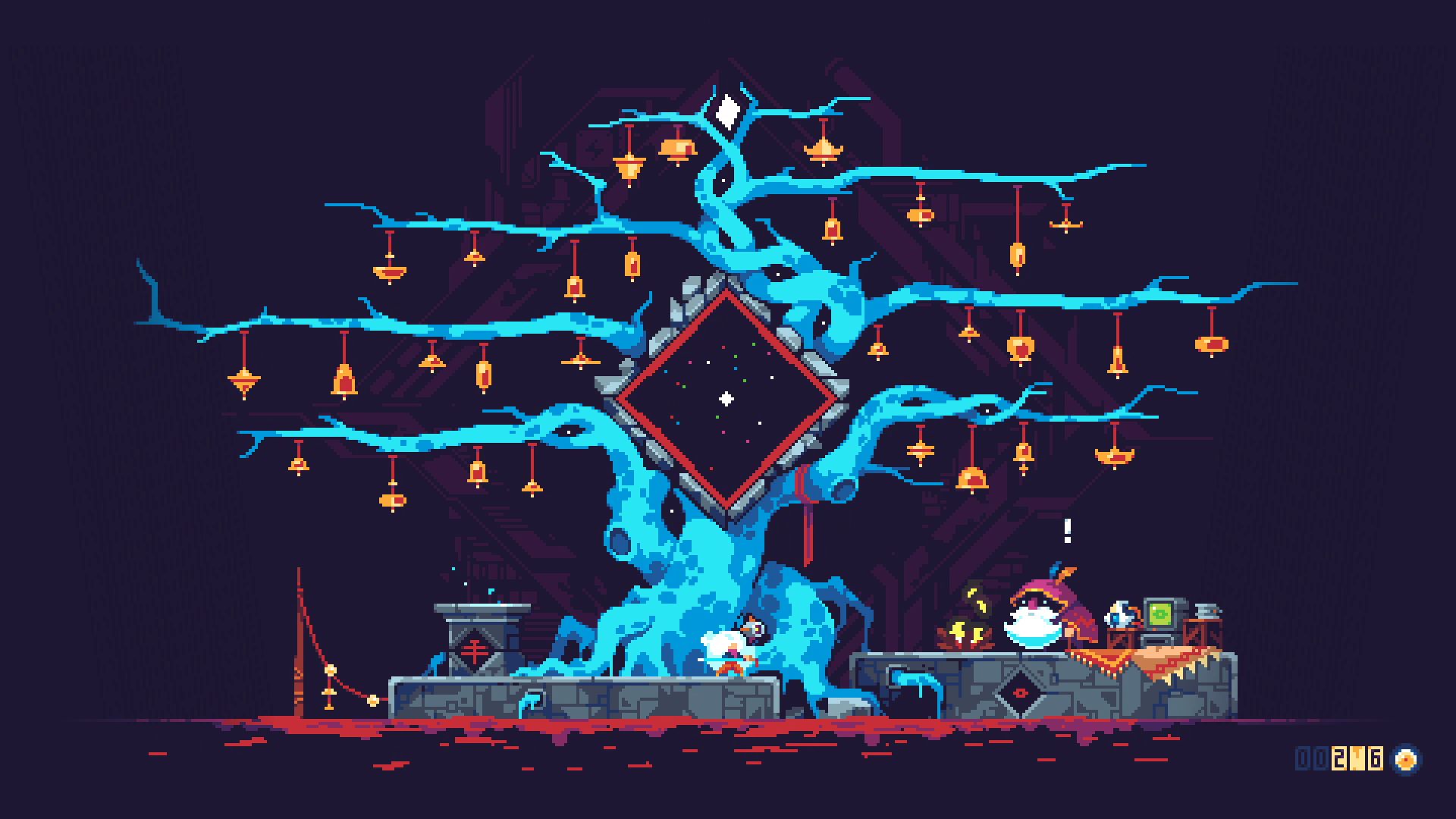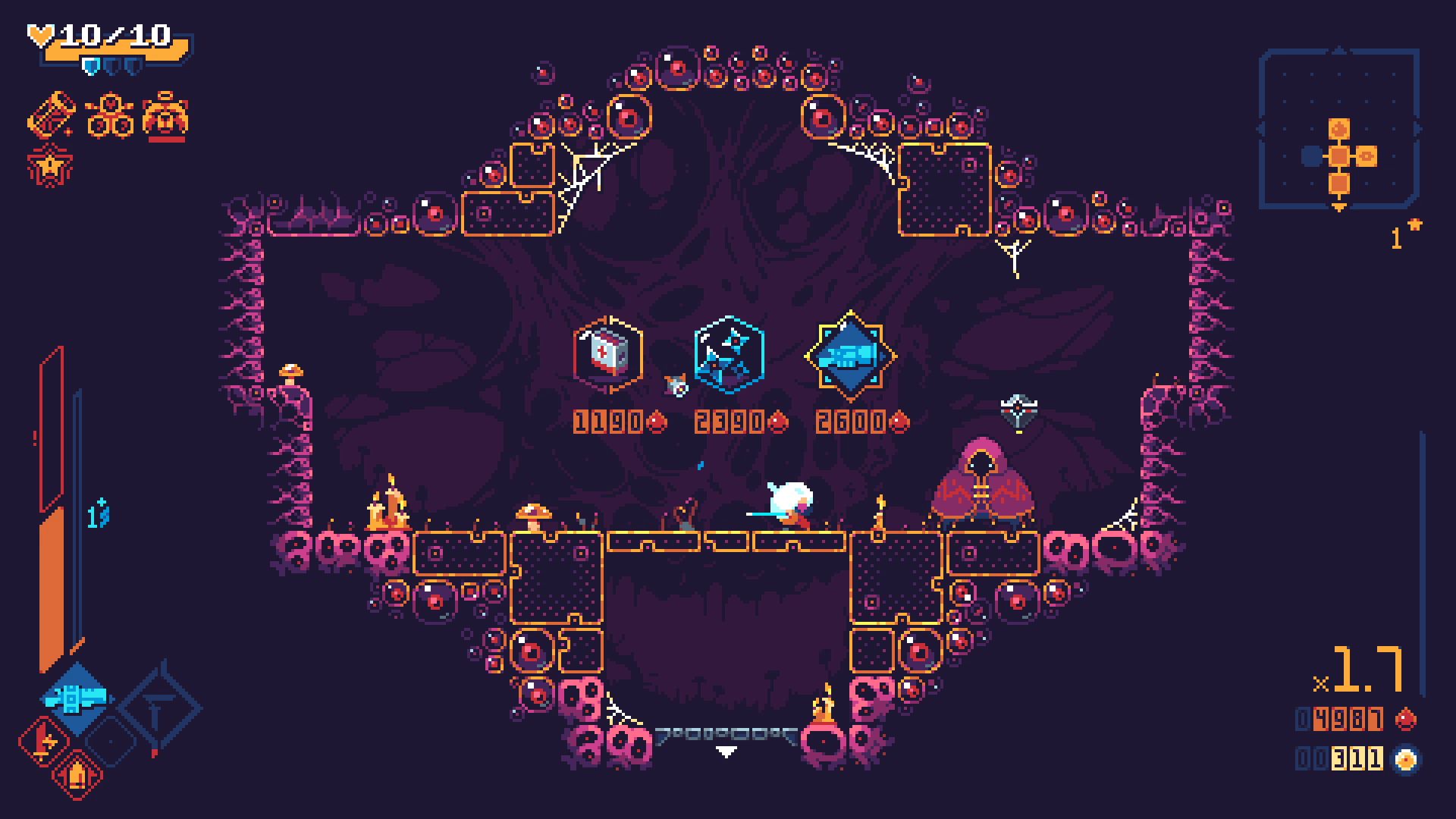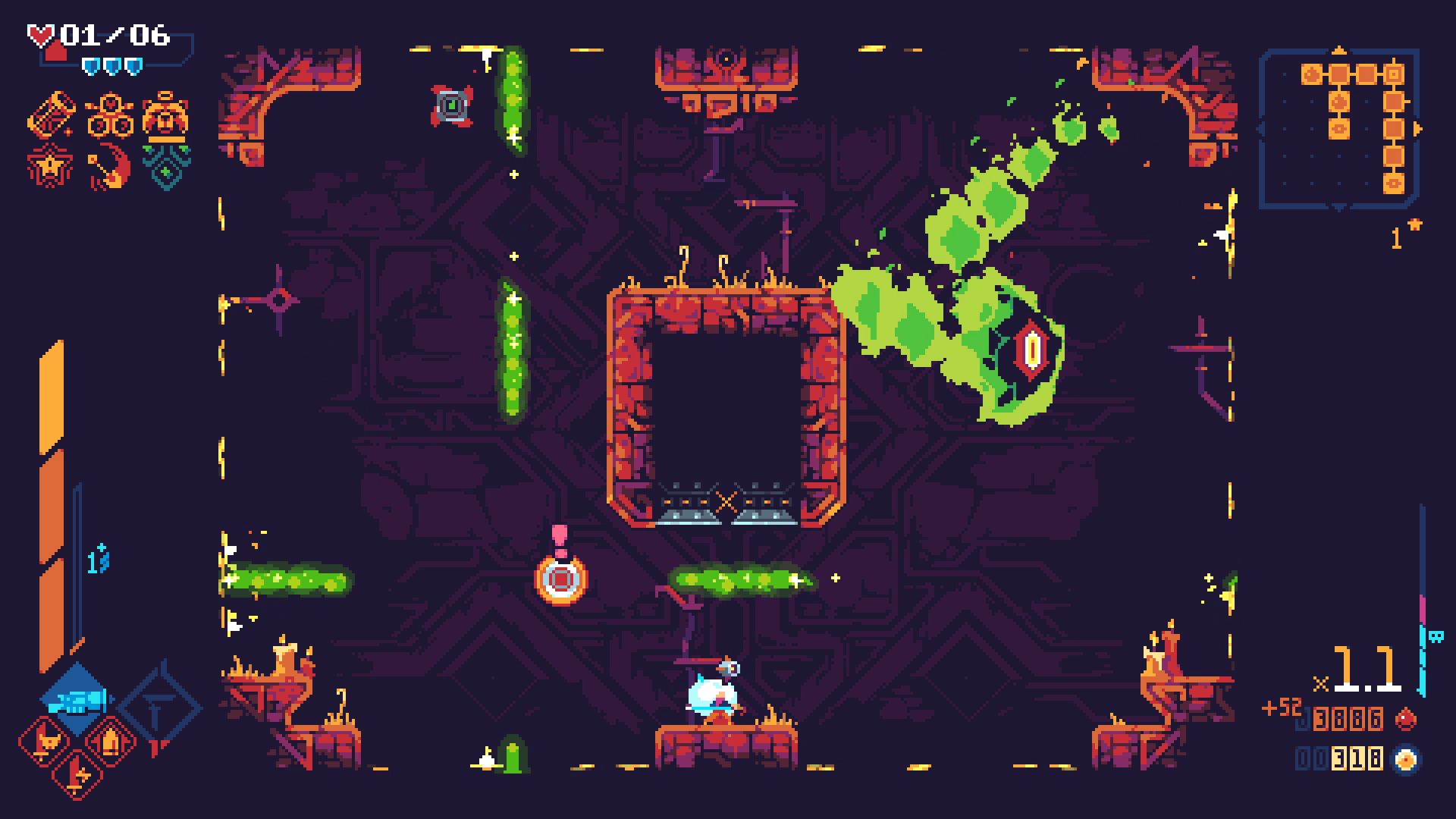With roguelikes such as Supergiant Games' Hades garnering critical acclaim in a crowded genre, ScourgeBringer attempts to make a name for itself with a slightly different approach. Primarily developed by two-person French studio Flying Oak Games, ScourgeBringer is an action-platformer that avoids the glut of options provided by titles like The Binding of Isaac to instead encourage mastery of its controls. The game succeeds in this, but it feels constrained by its adherence to other roguelike staples.
ScourgeBringer is intense, even by genre standards. Players are dropped into an apocalyptic world where a mysterious technological bastion has wiped out much of humanity. A messiah-like girl named Kyrha with fiery white hair trains her whole life and is sent to redeem humanity by clearing an Ordeal within ScourgeBringer, whose chambers change each time she's killed and brought back.
This set-up is serviceably intriguing, with the air of a grimdark Horizon: Zero Dawn in the divide between ragged, tribal humans and their technological menace. Kyrha meets her predecessors in ScourgeBringer, now shopkeepers or guides, and there is lore in abandoned travel logs. In an interview with Game Rant, Flying Oak Games co-founder Thomas Altenburger said a driving narrative was important, and the duo hired Narrative Designer Pia Jacqmart to flesh out its world. The game evokes the old-school aesthetic of Super Metroid, a comparison especially apt in the first realm, the Entangled Ingress, where eerie background music accompanies any area not embroiled in combat.
However, story is not at the forefront. It primarily serves as a justification for why the lead character is so physically adept. Kyrha enters ScourgeBringer with a katana and Blast.32, a robotic companion and revolver that can transform into different firearms. The game is a 2D platformer in which players travel between procedurally-generated rooms around five main realms; every room containing one-to-two waves of enemies with varying patterns and weaknesses.
Traversing feels a bit like Dead Cells and utilizes similar permeable ledges, but Kyrha has a floaty jump, runs up walls, and dashes through the air. She can dash, melee attack, and fire Blast.32 in full 360 degrees while moving. Repeatedly slashing her sword makes Kyrha fall slower, while jumps and skills typically replenish after attacks ala The Messenger. There's also a healthy dose of Hyper-Light Drifter in that ammo replenishes as Kyrha hits with her blade.
Players collect blood from enemies, which can be used during a run to buy healing items, new firearms, and stat buffs; the game's main collectables. Many successful runs are built on incremental five-to-ten percent buffs for stats like sword strength or stun chance that are earned from thoroughly exploring each realm, finding secret chambers, and taking on bosses or challenge rooms (which give players four-to-five waves of enemies instead of two).
While roguelikes such as Enter the Gungeon provide scores of tools to shake up each run, ScourgeBringer only has alternate gun types and blessings. One blessing from a decent pool can be chosen out of three options in each realm, each conferring passive abilities like boosting damage when low on health.
Mini-bosses (Guardians) and the realm boss (Judges) additionally give Judge Blood that can be used on a skill tree. The skill tree is what makes ScourgeBringer shine, as upgrades add attacks to Kyrha's arsenal or adjust how she interacts with the world. Some of these feel essential, such as a skill that lets players reflect enemy bullets in any direction using their heavy slam. These can be deactivated for those who prefer the minimalist design.
While skills help the game get more complex with options, they don't necessarily make it easier. ScourgeBringer is a hard game, with every realm like a war of attrition thanks to low starting health, waves of enemies, and high shop costs (including one that uses health as currency). Encounters shift its music into high gear, with the first realm's Metroid ambiance giving way to Doom's heavy metal. Each realm has its own vibe, like a swampy chemical plant with banjo tunes, but they all retain this energy dichotomy.
Precision controls make the game feel like an esport, as players use their growing prowess to enter a flow state, pouncing from enemy to enemy, racking up combos to increase blood haul without taking damage. It's satisfying to become a seasoned ScourgeBringer player, with crunchy visual effects like bosses exploding into clouds of blood droplets denoting hard-earned triumphs.
Game Rant was provided an Early Access copy to prepare for the interview with Altenburger, which updated to the release version at launch. For comparison, it took 20 runs to beat the first realm's Judge in Early Access, and only one on the full release. Some of this can be attributed to improvements and added mechanics, but it's a strong indicator of how ScourgeBringer encourages mastery.
In terms of controls, the game is well-designed but feels caught in the middle ground between PC and console viability. The aim of a mouse leads to incredible attack precision, but it can be awkward to activate skills like dashes with one's pinky (using default settings) if players aren't used to stressful hand-eye coordination. Having attacks mapped to controller buttons seems like it would solve this comfort issue at the cost of precision.
The esports comparison also feels accurate because only some will likely find it worth achieving a high-tier level of play. It's satisfying to become good at the game, but not particularly fun to go through it once every enemy pattern has been learned, as the focus on control mastery leaves subsequent rounds little to differentiate themselves. Only a handful of creatures exist in each realm, and the same Judge guards their exits. The music gets old fast, particularly with the Entangled Ingress' jarring dissonance being the most common to experience.
This repetitiveness ironically gets worse the further one gets. Encouraging players to clear everything for additional buffs does help build mastery, and there are fun risk/reward elements to decisions like battling a Guardian early for buffs. However, it's time-consuming and monotonous in early realms especially, and as players unlock skills that let them re-roll shops and carry blessings between rounds, they can pigeonhole themselves into "winning" strategies that ultimately narrow the scope of each round.
None of this is bad per se; there are players who will love a game that's mechanics-driven with a high skill ceiling. But this won't work for everyone, not to mention those with disabilities. Even appreciated accessibility options like auto-attacking and infinite health don't entirely negate the game's core difficulty as a repetitive action-platformer.
Its intended audience may also find navigating stage hazards can slow the frenetic pace to a crawl at times, and result in seemingly unfair deaths. The Pac-Man gimmick in the final main realm, with walls that let players, enemies, and bullets pass through to the opposite side, is also disorienting enough that it might not feel worth getting good enough to reach the end.
All that being said, Flying Oak Games has expressed its intent to add content going forward, which may fix some of the repetitiveness. The jump in content between the Early Access version and the final release was strikingly positive. Yet even if these changes do not broaden the game's niche appeal, there is something special here for those who want a mechanical experience that can bring about a fluid, satisfying flow state. For everyone else, the game should be a blast to watch at GDQ.
ScourgeBringer is available now on PC, Switch, and Xbox One. Game Rant was provided a Steam code for this review.

